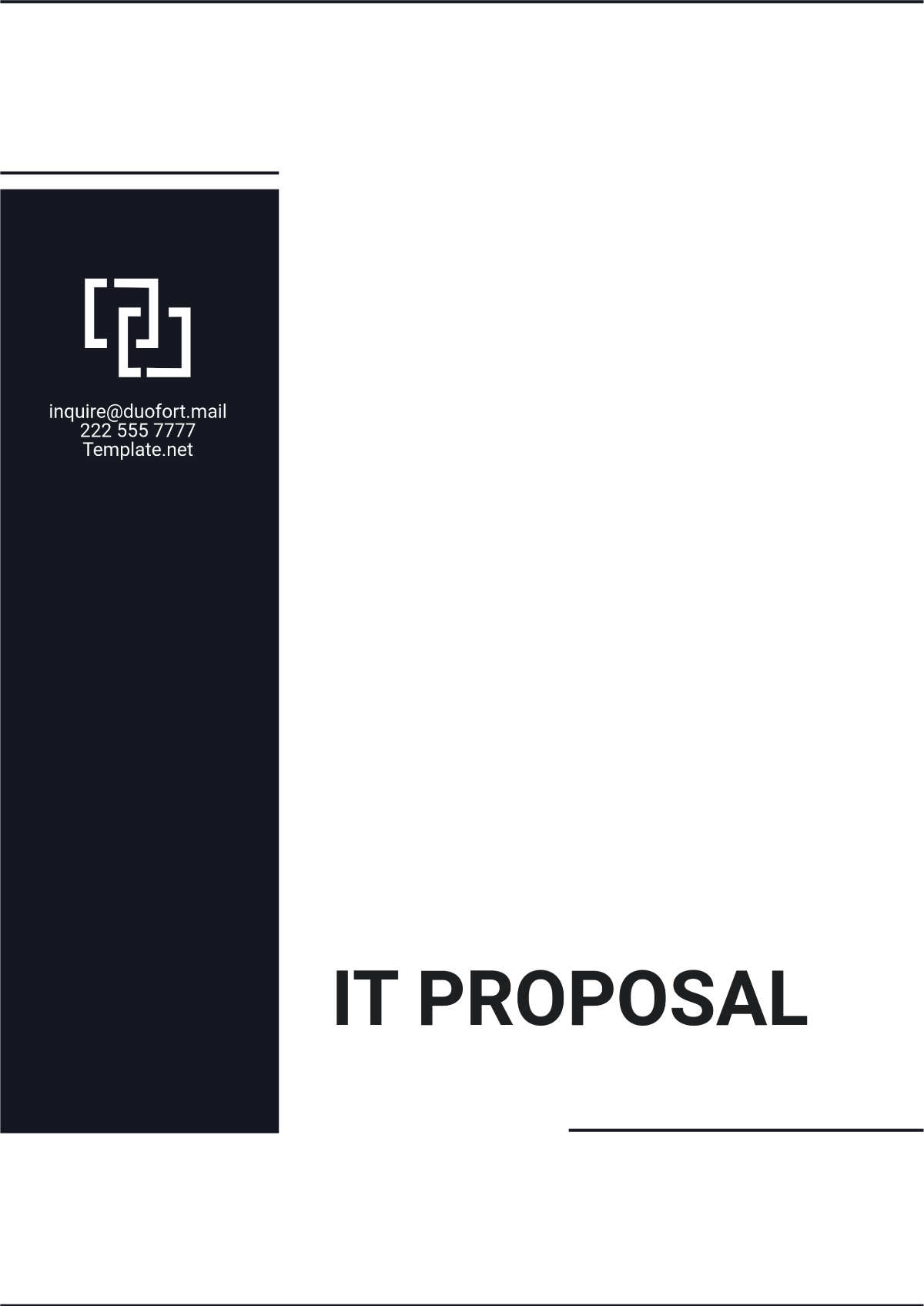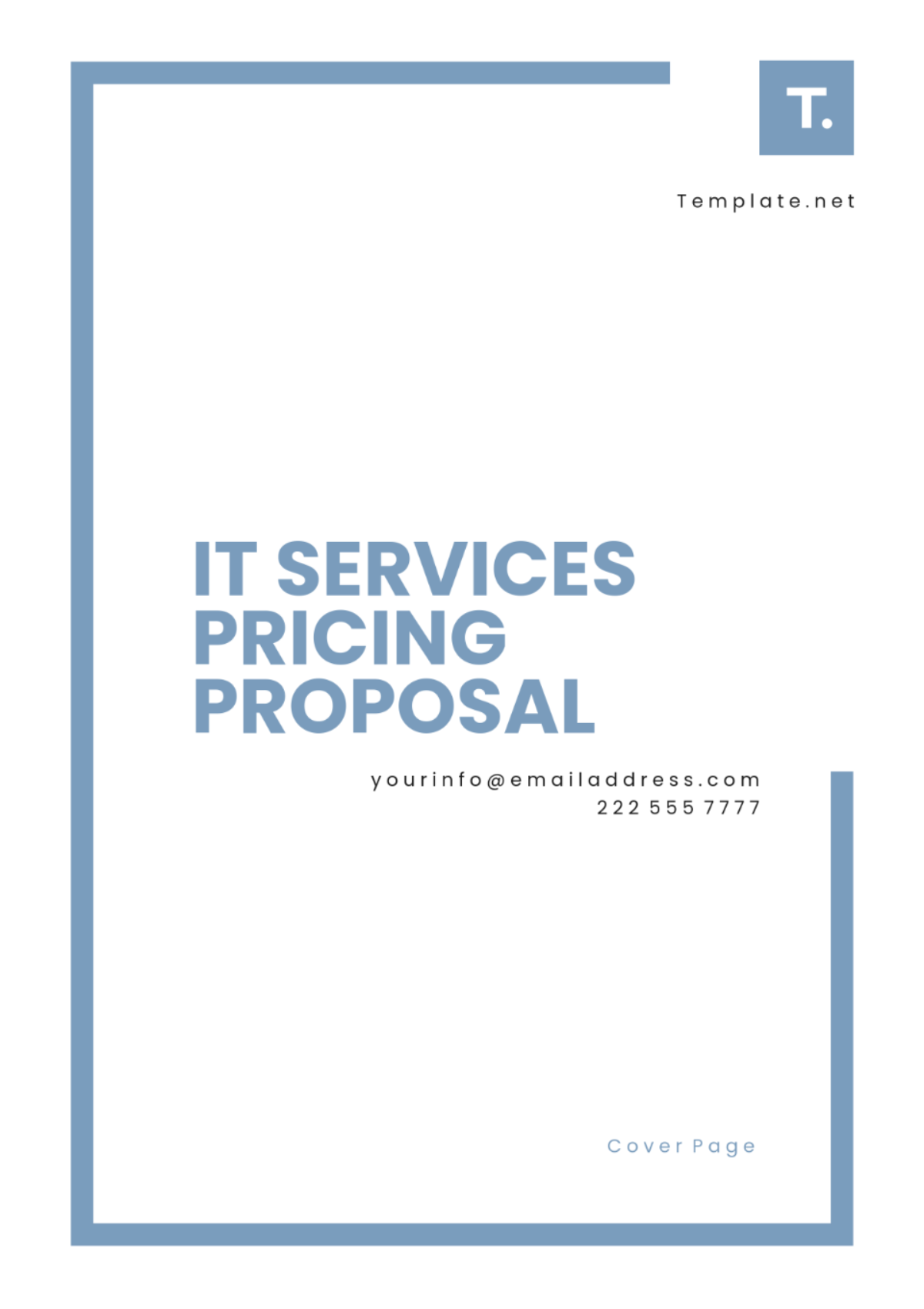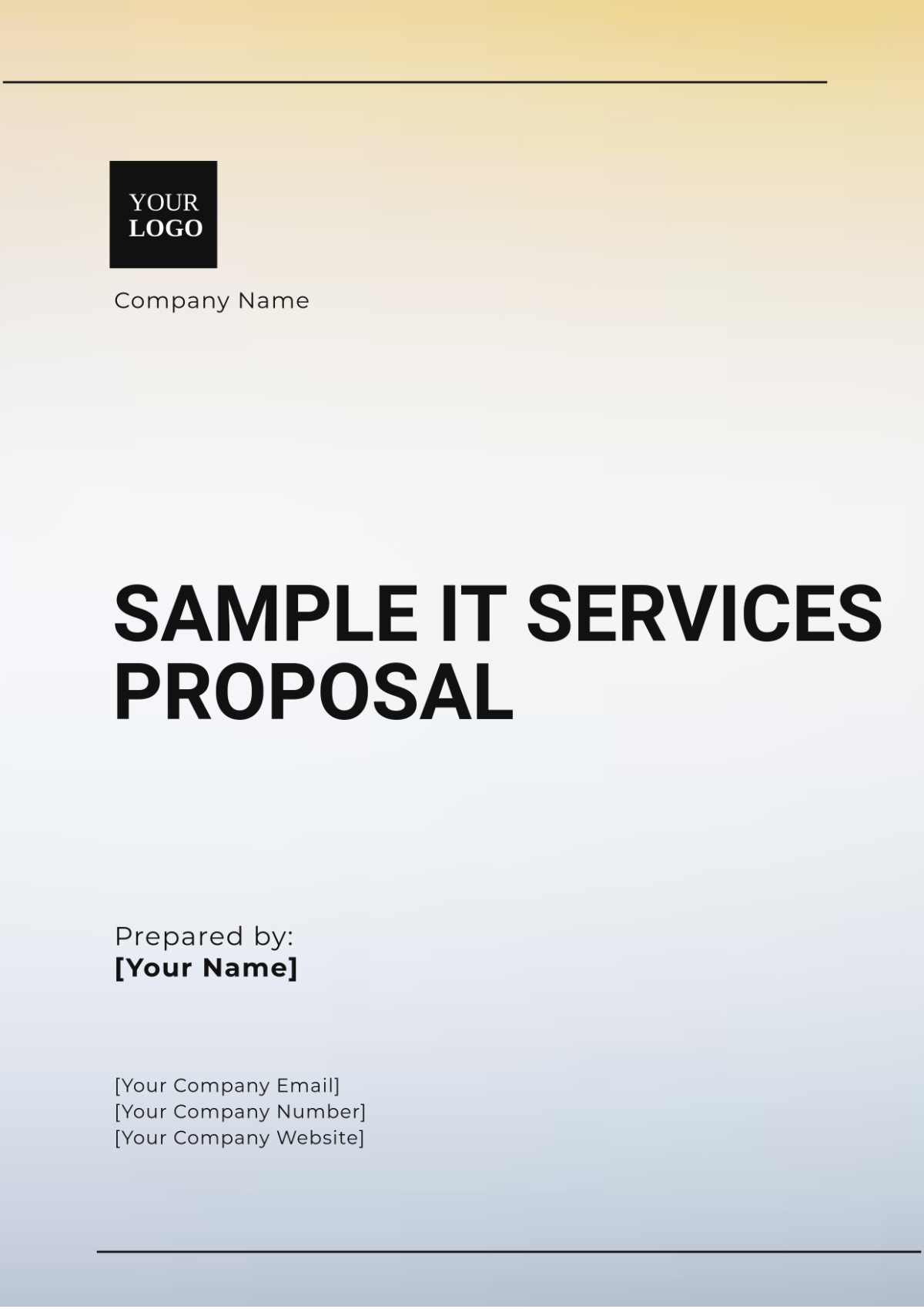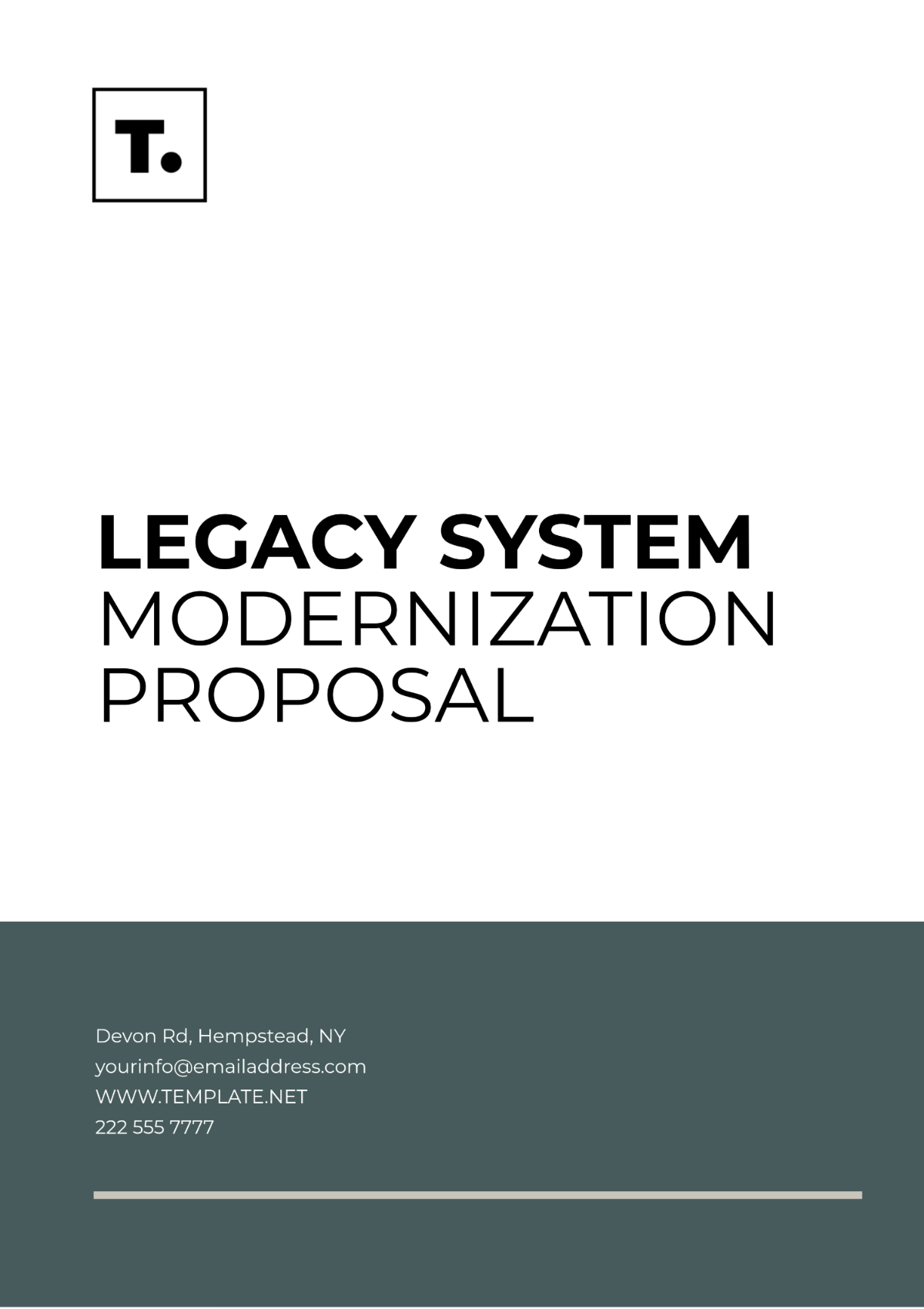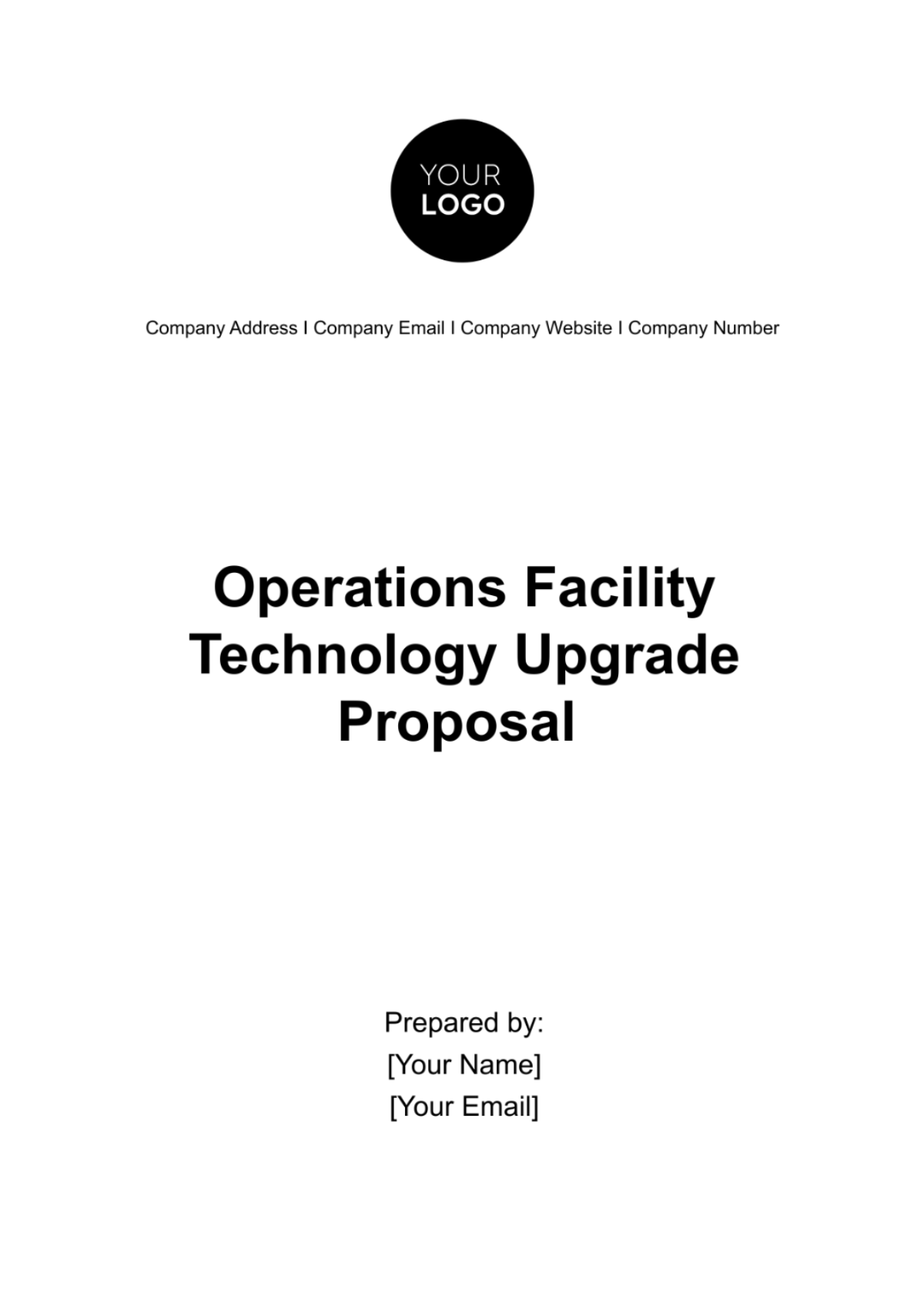Operations Facility Technology Upgrade Proposal
This proposal outlines a strategic plan for upgrading the technology infrastructure at [Your Company Name]'s operations facility. The goal is to enhance efficiency, improve safety, and ensure sustainability in our manufacturing processes. By investing in state-of-the-art technology, we aim to position our company for future growth, reduce operational costs, and meet the evolving expectations of our customers and regulatory bodies.
I. Introduction
In the competitive landscape of the manufacturing industry, the role of technology in enhancing operational efficiency, product quality, and sustainability cannot be overstated. [Your Company Name] stands at a pivotal juncture where the integration of advanced technological solutions into our operational facility is not just an option but a necessity for future growth and sustainability. The rapid acceleration in technological innovation and a significant shift in market dynamics over the past decade have highlighted the limitations of our current systems and infrastructure. The existing technology, while once state-of-the-art, now falls short in meeting the increasing demands for efficiency, agility, and quality in today's manufacturing processes.
Moreover, the growing emphasis on sustainability and environmental responsibility requires a reevaluation of our operational practices and equipment. Recognizing these challenges, [Your Company Name] proposes a strategic upgrade to our technology infrastructure. This upgrade is envisioned as a transformative project that will not only address current inefficiencies and limitations but also lay the foundation for future innovation and growth. It is a commitment to our employees, customers, and community to pursue excellence and sustainability in all aspects of our operations.
2. Background
[Your Company Name] operates a 250,000-square-foot facility that houses our manufacturing, warehousing, and administrative functions. Established in [Year], the facility has seen periodic updates to its technology infrastructure. However, the last major upgrade was over a decade ago, and the current system no longer meets the efficiency and capacity needs of our operations. This section provides an overview of the existing technology landscape, challenges faced, and the opportunity for improvement through strategic upgrades.
3. Objectives
The comprehensive technology upgrade at [Your Company Name]'s operational facility is guided by the following detailed objectives:
Enhance Operational Efficiency: The introduction of automated manufacturing systems and robotics aims to streamline our production processes, reducing manual intervention and the associated risks of human error. By optimizing workflow and increasing production capacity, we can respond more swiftly to market demands and customer needs.
Improve Product Quality and Consistency: Leveraging advanced monitoring and control technologies will enable us to maintain stringent quality standards across our product lines. Real-time data analytics and sensor technologies will provide immediate feedback on production processes, allowing for instant adjustments to ensure product consistency and quality.
Increase Safety and Ergonomics: A paramount objective is the welfare of our workforce. Upgrading to smart safety systems, including IoT-enabled wearables and environmental monitoring devices, will significantly enhance worker safety. These technologies will help in early detection of potential hazards, reduce workplace accidents, and promote a culture of safety throughout the facility.
Reduce Environmental Impact: Recognizing our responsibility towards the environment, the technology upgrade includes a shift to energy-efficient equipment and sustainable manufacturing practices. This initiative aims to lower our carbon footprint, reduce waste, and ensure our operations are in harmony with environmental sustainability goals.
Ensure Compliance: Regulatory compliance is a moving target, with standards and requirements evolving to address new challenges and concerns. The proposed technology upgrades will ensure that [Your Company Name] not only meets current regulatory requirements but is also well-prepared to adapt to future changes. This proactive approach will mitigate risks and reinforce our commitment to ethical and responsible business practices.
Foster Innovation and Agility: In a rapidly changing business environment, the ability to innovate and adapt is crucial. The technology upgrade will provide [Your Company Name] with the tools and infrastructure to foster innovation, explore new business models, and quickly adapt to emerging trends and opportunities.
By achieving these objectives, [Your Company Name] will not only solidify its position as a leader in the manufacturing sector but also set new standards for efficiency, quality, safety, and sustainability in the industry. This technology upgrade is a strategic investment in our future, ensuring long-term growth and success in an increasingly competitive and complex marketplace.
4. Proposed Technology Upgrades
To meet the outlined objectives, [Your Company Name] proposes the following key technology upgrades:
Upgrades | Description |
|---|---|
Automated Manufacturing Systems | Integration of robotics and automation technologies will revolutionize our production lines. By automating repetitive tasks, we can increase production speed, reduce labor costs, and minimize human error. Examples include robotic assembly arms, automated material handling systems, and CNC machines. |
Advanced Quality Control Systems | Implementing cutting-edge sensors and AI-driven analytics for real-time quality monitoring will allow us to detect and address defects early in the production process. Technologies such as machine vision systems for quality inspection and IoT sensors for equipment monitoring will play a crucial role. |
Smart Safety Solutions | Upgrading to IoT-enabled safety devices and wearables will enhance the safety and well-being of our workforce. Smart helmets, vests with environmental sensors, and wearables that monitor vitals can alert employees and management to potential health risks or unsafe conditions in real-time. |
Energy-Efficient Equipment | Replacing outdated machinery with more energy-efficient alternatives will reduce our energy consumption and operational costs. This includes upgrading to LED lighting, high-efficiency HVAC systems, and electric forklifts. |
Data Analytics and Reporting Tools | By harnessing big data analytics, we can gain insights into predictive maintenance, operational efficiencies, and strategic decision-making. Implementing an integrated software platform for data analysis and reporting will enable us to optimize our operations and respond dynamically to market trends. |
5. Implementation Plan
The technology upgrade will be implemented in a phased approach over 24 months, ensuring minimal disruption to our operations. The plan includes:
Timeline | Description |
|---|---|
Phase 1: Planning and Procurement (Months 1-3) | Finalizing technology selections, negotiating with vendors, and procuring the necessary equipment and software. |
Phase 2: Infrastructure Upgrades (Months 4-8) | Upgrading electrical, network, and mechanical infrastructures to support new technologies. |
Phase 3: System Installation and Integration (Months 9-15) | Installing new equipment and integrating systems with existing processes, including rigorous testing and validation. |
Phase 4: Training and Deployment (Months 16-20) | Training staff on new technologies and gradually deploying systems into full operation. |
Phase 5: Evaluation and Optimization (Months 21-24) | Monitoring system performance, making necessary adjustments, and optimizing operations based on data insights. |
6. Financial Analysis
The financial analysis of the proposed technology upgrades is a critical component of this proposal, offering a clear picture of the expected investment, cost savings, and financial returns. Our comprehensive analysis is designed to ensure that stakeholders understand the economic impact and benefits of upgrading [Your Company Name]'s operational technology.
Initial Investment
The total estimated cost for the proposed technology upgrades is $[Amount]. This investment covers the purchase of new equipment, software licenses, installation services, and initial training programs for employees. A detailed breakdown of the investment includes:
Automated Manufacturing Systems: $[Amount]
Advanced Quality Control Systems: $[Amount]
Smart Safety Solutions: $[Amount]
Energy-Efficient Equipment: $[Amount]
Data Analytics and Reporting Tools: $[Amount]
Operational Cost Savings
The technology upgrades are projected to result in significant operational cost savings, amounting to $[Amount] annually. These savings will be realized through improved energy efficiency, reduced waste, lower maintenance costs, and decreased labor costs due to automation. A breakdown of annual savings includes:
Energy Savings: $[Amount] (due to the use of energy-efficient equipment)
Reduced Material Waste: $[Amount](through advanced quality control systems)
Lower Maintenance Costs: $[Amount] (from more reliable, state-of-the-art equipment)
Labor Savings: $[Amount] (as a result of automation and improved efficiency)
Return on Investment (ROI)
The ROI for the proposed technology upgrades is calculated by dividing the annual operational cost savings by the total initial investment. Based on our projections, the ROI is [Percentage], indicating a strong financial return from the investment in technology upgrades.
Payback Period
The payback period—the time it takes for the savings generated by the upgrades to cover the initial investment—is estimated to be [0] years. This calculation is based on the annual operational cost savings and the total investment required for the technology upgrades.
Long-term Financial Benefits
Beyond the immediate cost savings and ROI, the technology upgrades will position [Your Company Name] for sustainable growth and competitiveness. Long-term financial benefits include increased production capacity, access to new markets due to improved product quality, and enhanced agility in responding to market changes. Additionally, the investment in sustainable technologies aligns with global trends and customer expectations, potentially opening new opportunities for business development and partnerships.
Financial Projections
To provide a clear understanding of the financial implications of the technology upgrades, the following table summarizes the key financial metrics:
Metric | Value |
|---|---|
Total Initial Investment | $[Amount] |
Annual Operational Savings | $[Amount] |
ROI | [Percentage] |
Payback Period | [0] Years |
7. Risk Management
The risk management strategy begins with a thorough risk identification process, where potential technological, financial, and operational risks are systematically cataloged. Technological risks include the possibility of selecting technologies that may not integrate well with existing systems or may become quickly outdated. Financial risks encompass the potential for the project to exceed budget or for the anticipated ROI to not materialize as expected. Operational risks involve the challenges associated with transitioning to new systems, including potential downtime, disruptions to production, and the learning curve for staff.
Once risks are identified, the next step involves assessing the likelihood and potential impact of each risk. This assessment is critical for prioritizing risks and focusing mitigation efforts where they are most needed. High-probability, high-impact risks are addressed as a priority, while lower-probability or lower-impact risks are monitored and managed accordingly.
Mitigation strategies are then developed for each identified risk. For technological risks, this might involve conducting pilot tests of new systems before full-scale implementation or choosing technologies with a proven track record of integration success. To mitigate financial risks, the project will include a contingency budget and regular financial reviews to ensure adherence to the budget and adjust plans as necessary. Operational risks are addressed through comprehensive training programs for staff, phased implementation schedules to minimize disruption, and establishing clear protocols for transitioning to new systems.
Furthermore, the risk management plan includes ongoing monitoring and review processes to identify new risks as the project progresses and to evaluate the effectiveness of implemented mitigation strategies. This dynamic approach allows [Your Company Name] to adapt to unforeseen challenges and ensures that risk management is an integral part of the project lifecycle.
8. Conclusion
The proposed technology upgrades represent a strategic investment in the future of [Your Company Name]. By enhancing efficiency, safety, and sustainability, we are positioning our company for long-term success and competitiveness. This proposal outlines a clear, feasible plan for transforming our operations through technology, ensuring that we continue to meet the evolving needs of our customers and stakeholders. We are committed to executing this vision and achieving the benefits outlined in this proposal.
